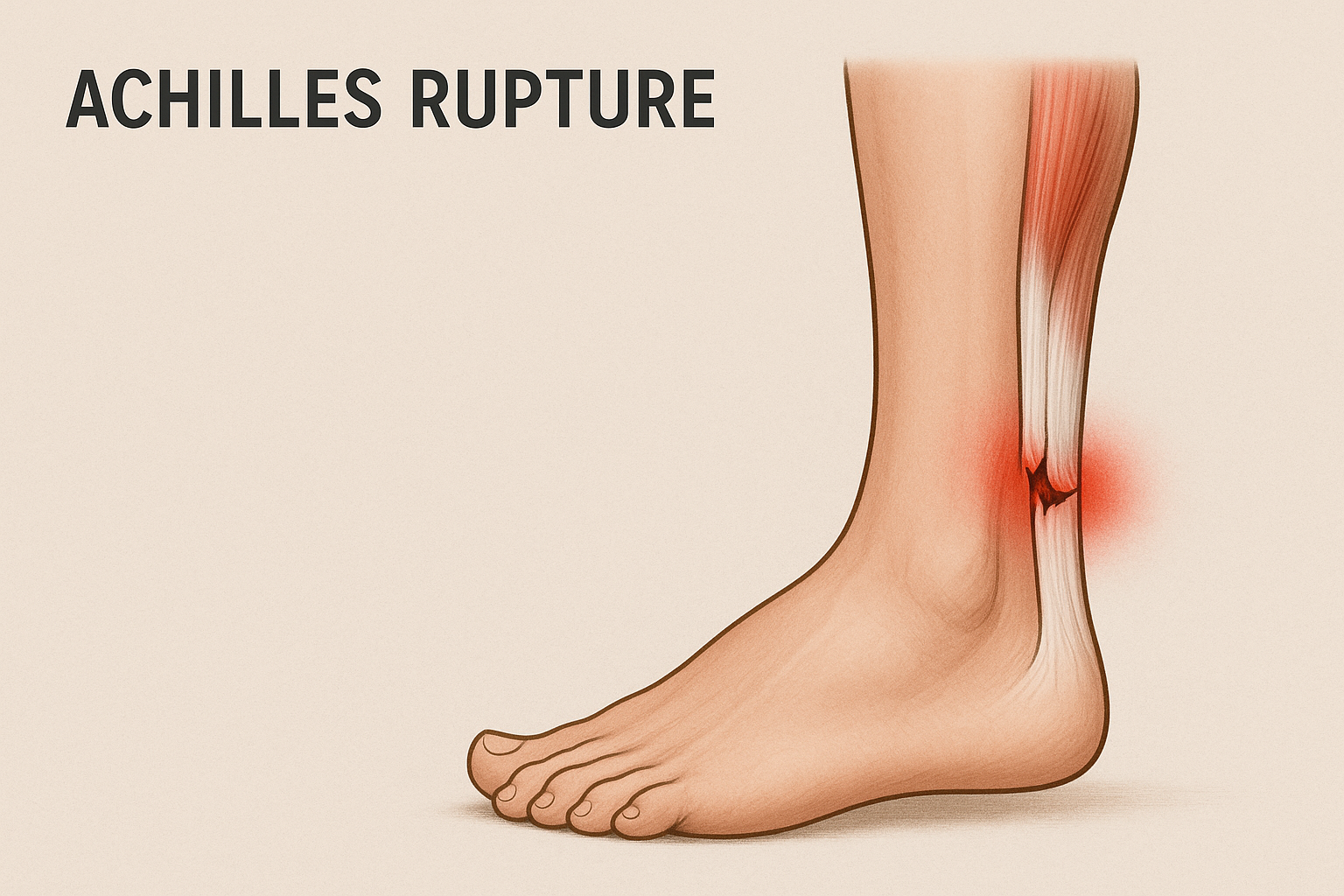 The 2024-2025 NBA season saw a total of 7 players suffer season ending Achilles ruptures. This is roughly a 350% increase in occurrences when compared to the historical average.
The 2024-2025 NBA season saw a total of 7 players suffer season ending Achilles ruptures. This is roughly a 350% increase in occurrences when compared to the historical average.All 7 ruptures this season had the same mechanism of injury, a false backwards step. This motion forces the ankle into rapid dorsiflexion. Data seems to point towards an increased risk of rupture when the angle between the tibia and ankle is 48 degrees or less. This motion has been popularized due to the style of basketball expanding outwards and defenders closing out hard. In order to beat the close out, the offensive player will naturally take a backwards false step to generate quick acceleration forwards in hopes to blow past the defender or fake as if they plan to do so. The strain placed on the tendon ends up being too much and a rupture occurs.
Most ruptures occur following consistent overuse meaning that if observed under a microscope majority of the tendons would show degeneration meaning they were already weakened. This is very much likely to be the case for Tatum and Haliburton due to their volume of games played. Other than Haliburton, two other Pacers players tore their Achilles which could be attributed to their style of play, statistically leading the league in pace of play. This means more stop and go, more possessions, more cuts, more volume of intense activity for degeneration to occur.
Similarly if you remember last season Christian McCaffery was very cautious dealing with a calf strain during the NFL season in order to avoid fully rupturing his Achilles and ending his season. If you also remember, Kevin Durant suffered a ruptured Achilles tendon following a false backwards step in the 2019 NBA Finals. A full breakdown of that injury can be found here (Durant blog)
